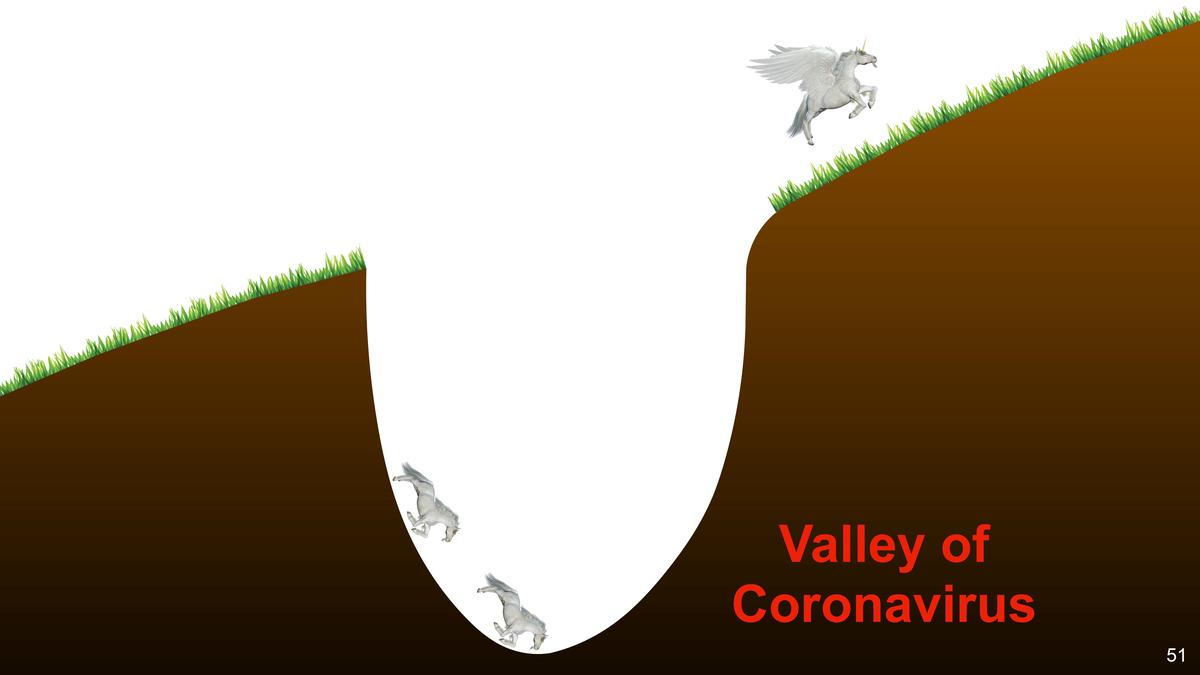TOKYO (Reuters) – A chastened Masayoshi Son summed up SoftBank Group Corp’s (9984.T) record $13 billion operating loss on stage this week with a striking image: unicorns tumbling into the “valley of the coronavirus”.
Son’s presentations are more akin to the performances of Apple Inc (AAPL.O) co-founder Steve Jobs than the data-dense displays common in corporate Japan, with slides becoming an enduring part of the chief executive’s sales pitch.
While striking some observers as comical, the images, mixed with charts showing free cash flow and dividend policy, often outline central tenets of the businessman’s thinking.
Notable examples include SoftBank as a golden egg-laying goose that will reward with patience, or as tofu representing corporate wealth that the tech conglomerate will in the future churn out like a factory.
“How rare is that in a leadership communication in Japan?” said public relations consultant Bob Pickard, who advises CEOs. Such images play a major role in driving news coverage and chatter on social media, he said.
Son has recently returned to Twitter, tweeting this week, “the reason for failure lies not externally but within yourself”. But presentations remain the primary method for publicly advancing his ideas, with slides including soaring multi-coloured unicorns representing billion-dollar startups.
To convey his technological utopian vision he uses not only slides but slogans in the simple English favoured by Japanese companies targeting their domestic base. SoftBank looks beyond merely maximising shareholder returns with its corporate philosophy of “information revolution – happiness for everyone”.
However, his optimism is meeting brute reality as the coronavirus crashes the global economy and hammers Son’s investments.
Son relies on a simple narrative couched with ample small print legalese, said Pickard, with this week’s argument that “winged unicorns” will escape the “valley of the coronavirus”.
“He runs the risk of not being taken seriously and becoming a caricature,” Pickard said.
Source: Read Full Article
